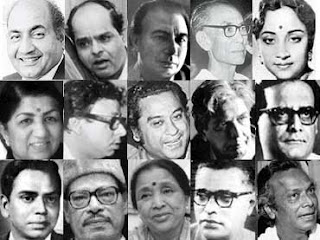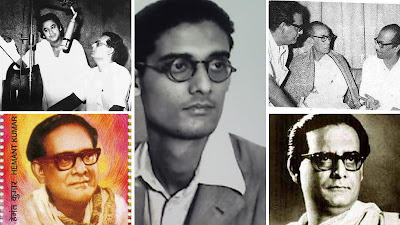PART 8 OF 10: THE KING...IS BACK!
I will take one giant leap forward from 1962 to 1971.
Charles Manson and his death cult, the so-called 'Manson family', were sentenced to death by the courts - it was later commuted to life in prison in 1972 - for what were called the Tate-LaBianca murders, one of the most gruesome serial killings in the US at that time.
I had recently watched a Netflix series called 'The Mindhunter', about a breakthrough effort, in the 70s, by the Behavioral Science Unit of the FBI that revolutionized the methods used by law enforcement agencies to profile criminals. The interviews with the serial killers like Charles Manson and Edmund Kemper that helped device these methods were at once fascinating and deeply disturbing. Fascinating for the insights into the psychology of serial killers that it provided and disturbing for how brutal and psychotic these seemingly intelligent and, at least in Kemper's case, affable people could be.
The other big event of 1971 was the India-Pakistan war and the eventual liberation of Bangladesh from Pakistan. Partitioning India may have been a historical necessity but creating a new country with two fragments ostensibly united by a common religion but divided by culture, language and a two-thousand two hundred kilometer landmass - that too of a hostile country - was idiocy of gargantuan proportions.
Undivided Bengal (including present-day Bangladesh) was an independent and prosperous region for millennia. At one time, it contributed to over fifty percent of the total trade by the Mughal empire and 12% of global GDP. The British emasculated Bengal with its policies and the Pakistani establishment did the same by marauding over Bengal's rich history of intellectualism and commerce. 1971 was when things boiled over and Bangladesh was eventually liberated. But not before five hundred thousand people were murdered and over a hundred thousand women raped.
Back to films and songs, I am going back to the King - SD Burman - for the eighth song in this series. SDda, even during his peak, was very discerning about his annual musical output.
And boy did he nail it with 'Sharmeelee'! In fact, I will go to the extent of saying that 'Sharmeelee' was one of his best works ever. The movie was produced by Subodh Mukherjee (younger brother of Sashadhar Mukherjee) and directed by his protégé, Samir Ganguly.
To his credit, Samir made sure that the somewhat regressive pulp plot doesn't lose steam till the end. It also gets tremendous mettle from its lead pair - Shashi Kapoor and Rakhee - and of course, the music.
I had never been a big fan of Rakhee. She irritated the hell out of me with her horrible acting. Her phlegmatic voice and her incoherent dialogs ('Mere Karan Arjun zaroor waapis aayenge') sounded like nails scratched on a chalkboard and made me convulse with rage. Till I re-watched 'Sharmeelee' a few years ago. Not only did she look like a million dollars, but she totally owned the two roles in the movie. Yeah! I forgot to mention. She has a double-role in the movie. That is two million dollars worth of viewing.
What about the music? Well, it is a SDB coup de maître. Six sixers of six balls, Gary Sobers style (Sobers accomplished that feat three years before the release of Sharmeelee). Three of SDB's classics are set to evocative classical ragas. Two of them are masterpieces in their own right. There is the vivacious 'Khilte hain gul yahaan' which is set to a beautiful Bhimplasi, for the most part, and is one of my all-time favorites. 'Kaise kahen hum' is set in a plaintive Thilang.
The peppy songs in the album, 'Oh meri sharmeelee' and 'Aaj madhosh hua jaye re' stand on their own and perhaps feature in many an evergreen playlist.
Kishoreda delivers these songs masterfully, which underscores why he became the undisputed superstar of playback, through the seventies and the eighties.
Then there is 'Reshmi ujala hai makhmali', which is an Asha Bhosle masterpiece. But then SDB saves his best for my favorite song of the album.
Samir Ganguly needed a poignant number to capture Kanchan's (Rakhee in the traditional role) overwhelming grief when Shashi Kapoor's character tells her that he is not in love with her, but her twin sister, Kamini (Rakhee in the modern avatar). The introverted Kanchan, who has been persistently made to feel inadequate against her sister feels sadness and disappointment, and yet is happy for the sister that she genuinely loves. An ordinary music director would have jarred our ears with a "safe zone", dissonant song oozing with rhonduness quotient; and made Rakhee and the audience shed a bucket of tears to a Hindustani Todi or a Mukhari. But guess what the ingenious SDB does. He chooses a rare Hindustani raga named Patdeep, which beautifully encapsulates the complex emotions in Kanchan's mind. Lata renders one of her finest solos in 'Megha chhaye aadhi raat' (beautiful lyrics by great poet, Padmabhushan Gopaldas Neeraj). Who could have guessed that SDB, the ailing sexagenarian, in his fourth decade in the film industry, would choke us up with this beautiful number. Take a bow, Maestro!
Note: There isn't a video of this song available on YouTube. I have provided a link to the video song from another site. The YouTube link below is audio only, if you want to miss the two-million dollars worth of Rakhee-viewing.








Comments
Post a Comment